Story and photos by Cathy Richards
Back in the 1970s, the Wisroc Housing Scheme was the showpiece of Linden with its hundreds of three-bedroom claybrick houses, most of them built by self-help. While they were not the first set of houses constructed in the community, they remained its centrepiece.
The scheme was the initiative of Forbes Burnham when he was prime minister. The very first houses were made of wood and were elevated off the ground, but the claybrick ones which succeeded them were bungalows. A trip around the community reveals that most of the wooden ones and the later claybrick structures are still standing, although some have been extended and a few plastered over with concrete hiding the claybrick.
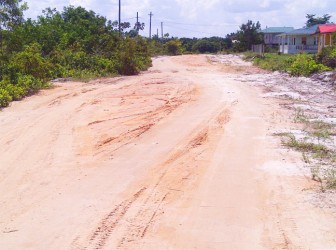
Back in those days Wisroc was also a showpiece because of its good infrastructure, with roads made of crushed stone sealed in bitumen and drains lining every street. The hundreds of mango trees on the parapets of most streets were left undisturbed. The water supply was comparable to that in the rest of the town, with its source being the still existing water treatment plant some miles into the forested area at the far end of the community.
When Stabroek News visited Wisroc recently, several of its longstanding residents choose to reflect on the glory days. Some of the oldest residents were brother and sister Richards, the DeJonges, Crandons, the Clements, the Millers, Sister Chase, the Lewis’s, the Williams, the Johnsons, Ms Kaye, the Huntleys, the Benns and the Bumburys, just to mention a few.
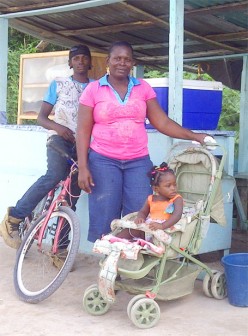
Beverine Richards aka Sister Richards spoke of her family’s pride in being a resident there from the late 1970s. “This place was a beauty; we weren’t the rich kinda people but were a strongly knit community,” she said. Speaking of the day that made Wisroc stand out from the other communities especially on the Wismar shore, she said: “People from all over use to leave where they were living to come to Wisroc to shop at the complex we had here; the cafeteria was a hot spot for all-day recreations, but to say how and why all these things were left to run down I really can’t say.”
In the early days the Wisroc complex which had an adjoining cafeteria was one of the largest employers of residents from the community with the Construction Depot aka TheYard being the second and the Wisroc water treatment plant being the third. In fact they were the only thee economic activities in Wisroc itself at the time. A few persons operated small businesses selling limited quantities of groceries and confectionary. “I really don’t remember anyone around here who use to sell things like vegetables; if you didn’t get that at the complex you had to go all the way down the road (Mackenzie business centre or the Wismar Municipal Market) to get those things,” she recalled.
“The Benab was on the ballfield where we use to keep all our functions and things man,” reflected Sister Richards. Today the Wisburg Secondary School sits on that plot of land.
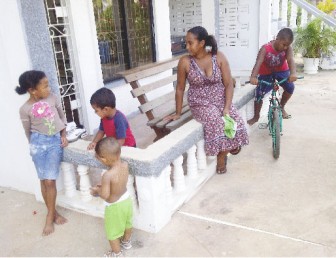
Over the years Wisroc has expanded beyond its original two-and-a-half Phases: 1, 2 and 2B. Phase 2B is commonly called phase 3. The Ministry of Housing over the past decade has issued in excess of five hundred house lots forming Phase 1 and 2B respectively. More than one hundred homes have gone up in the extended areas but residents there complain bitterly of infrastructure. “This is not symbolic of what Wisroc stands for,” said one resident who asked to be referred to only as ‘Sonny.’
His opinion about the extensions was shared by many residents. “When we paid all those years ago for our land, infrastructure was a main part of the payments,” said Marlon Williams, a resident of Phase 1B. Williams complained bitterly of the state of the fairweather roads in the area and the absence of a potable water supply to their home. “The only thing we can safely say we had no trouble really with is electricity,” said Williams.
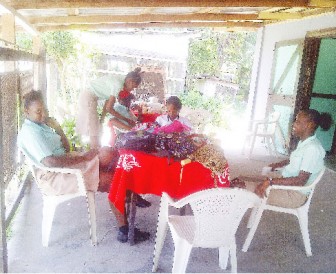
His neighbours, the Pollydores also added their bit. “It’s really sad and hard man; look how long, just look how long we paid for lands here to the extent that we even finish building, already living here and we can’t get a proper road,” said Christopher Pollydore who was echoed by several other residents in the neighbourhood. They spoke of the difficulty in getting public transportation to traverse the area. “They got one or two hundred dollar cars or the real-time taxis that would take the risk of coming behind here, and you have to pay as much as a hundred dollars more just to come down this stretch,” said the man’s wife.
The situation is usually ten times worse whenever it rains. “When the rain falls, my goodness gracious we would feel like the people of the forgotten land; this road does be terrible. Vehicles sticking up, you can’t walk on that road, if you must get out you got to put on some old shoe or so and then dress properly when you reach out,” said Sonny; “and we need telephone service in here; we got enough homes in the area now for GT&T to give us land phones. If you don’t have cell phone credit. is blow. Sometimes we got to get an ambulance, police or even the fire service and is problems because the other thing is that we don’t get proper signal for cell phones.”
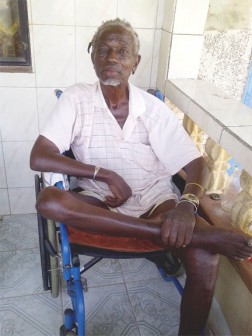
“We see them now trying to lay pipelines in the area; we ain’t know how long that will take cause you know the history of those kinda work,” shouted a resident who was passing by as SN was conducting an interview. “Carry the news straight cause we suffering like hell behind here. Don’t nice up nothing, tell them just like it is,” said the passer-by. A young-man who was in her company added: “All dis government doing is paying every attention to Amelia’s Ward, like we down here ain’t citizens of Guyana or like we money aint got value.”
Roads throughout the community have become degraded over the years and very little rehabilitation has been done. “All we get is lil, lil patch works in this place. They got some roads that we can’t even use in this area,” said a Phase 2 resident.
At phase 2B (Phase 3), residents critiques work being undertaken by the Ministry of Public Works. The works ministry is attempting to arrest the serious erosion of a gully area, which if not done, threatens the integrity of several houses.
Recently a Community Development Group (CDC) was formed in the area with the objective of addressing several issues affecting the community. Recently Member of the Group Arnold Forde said that they have several initiatives on the table to make the community a more homely place. “But we want this to have maximum involvement from residents,” he said. He highlighted that since their formation a few months ago they have been involved in de-bushing exercises, clean-ups and are currently working on making the lone playfield usable. He said that though the plot of land has been fenced and bleachers erected, it lacks landscaping and other features necessary for usage. “We have so much we can and want to do; we understand that things don’t happen overnight but I am optimistic that given ample time together we will bring back some pride to this place.” said Forde. They were the first to step forward with several donations to assist Esme Johnson and her family who had lost all their belongings in a recent fire which ravaged their home.
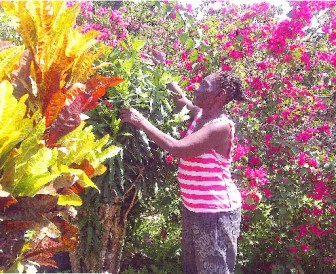
The residents of Wisroc, like those in the many other communities which form Linden, are employed at entities and public institutions scattered throughout the town – the nursing and teaching professions, the bauxite industry and small businesses. There are approximately twelve small grocery shops, salons and snackettes in the community, yet unemployment is still very evident. Kitchen farming is hardly done, although quite a number of persons take pride in flower gardening.
“We ain’t got nothing especially for our young people especially to do,” said Claudia Johnson. Noting that although the majority of the youths would have graduated from high school and even university, quite a number of them are forced to take up jobs in the interior or stay at home. “When they home they ain’t even got a ballfield to go burn out some energy, so you know what’s the result of that,” she said.
Residents said, however, that the religious community has been guiding youths in a responsible lifestyle. The two main churches are the Pentecostal Assembly of God Church and the Seventh Day Adventists whose congregations are about equal. There are a few Faithists and Muslims, but no known Hindus. The Rastafarians have fellowship at their tabernacle which is located in Linden, and is said to be the largest in the country.
Wisroc also can boast of having a library, nursery and secondary schools, as well as a police outpost, which also serve the adjoining communities of Block 22 and One Mile Extension. The Wisroc water treatment plant serves Blueberry Hill, One and Half Mile and Block 22, among others. Access to the interior locations of Guyana is through Wisroc, which is the last community in Linden before the Rockstone-Mabura trail. A gas station is presently under construction in Wisroc and is strategically sited for vehicles bound for the interior.
“We are a very quiet neighbourhood, we are very loving and we look out for each other as far as possible.” noted one resident.









